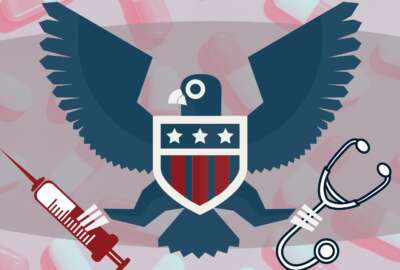As FEHBP carriers put final touches on 2023 plans, you can start researching today
FEHBP carriers, new and old ones, have until May 31 to submit to the Office of Personnel Management their benefit and rate proposals.
The mystery of the 2023 Federal Employee Health Benefit Program premiums will not be unmasked for several months still, but if you remember the old Scooby Doo cartoon, the Mystery Machine crew is about to get its first clue.
FEHBP carriers, new and old ones, have until May 31 to submit to the Office of Personnel Management their benefit and rate proposals. OPM then will use the next several months to complete benefit and rate negotiations. In its carrier letter from February, OPM says its timeline to get benefit negotiations done is July 31 and rate negotiations completed by mid-August.
“OPM’s focus for the upcoming plan year is advancing health equity and ensuring the federal government, as the largest employer in the country, offers competitive, comprehensive health insurance benefits to its employees, annuitants, their families, and other eligible persons and groups,” OPM stated in the letter to FEHBP participants. “Our health equity initiatives for the 2023 plan year relate to maternal health, gender affirming care and services and obesity. In our ongoing efforts to offer competitive benefits to meet consumer demand and address evolving medical evidence, we identify specific initiatives in areas such as assisted reproductive technology, preventive health services and coverage for necessary medical foods. We also continue our emphasis on the Coronavirus Disease 2019 (COVID-19) pandemic by maintaining equitable access to testing, vaccines, and therapeutics as well as ongoing efforts related to telehealth, mental health, and substance use disorders.”
What or how the providers address these areas of focus outlined in the carrier letter will be among the excitement in late September or early October when OPM announces the changes and premium costs.
Time is now to research FEHBP
In the meantime, employees can use these next few months between now and open season, which begins Nov. 14, to do something that most feds rarely do — research and planning.
Walton Francis, a health policy analyst and author of the annual Consumer’s Checkbook for federal employees, said OPM and the FEHBP carriers tend to do a good job in keeping up with national trends and changes to private sector healthcare programs.
But federal employees are renowned for not keeping up with the changes and taking advantage of better coverage, reduced costs or both.
Among the recent private sector trends Francis highlighted was the emphasis on preventive care, such as health club and diet benefits, and offering one annual physical at no cost, as well as free care for employees who are pregnant and education and wellness incentives for people who are obese.
Francis said it’s hard to predict what carriers will offer this year, but there are several areas federal employees should look out for.
“OPM emphasized equity issues in the letters so people who are low users of insurance plan, who often are low income or minorities and aren’t used to rich benefit packages in FEHBP,” he said. “OPM wants the plans to reach people so they know about benefits that are available.”
The lack of knowledge about what’s in the plans is a broad challenge.
Francis said a strong majority of employees don’t take the time or put in the energy to explore their options to lower prices and receive the same or better care.
One example Francis pointed to is with one of the largest carriers, Blue Cross, Blue Shield.
“The Blue Cross, Blue Shield standard option is pricey and several thousand dollars higher than others, but the Blue Cross, Blue Shield basic option provides roughly the same benefit level and premiums are a couple of grand lower and go to about 95% of all providers in America,” he said. “Most federal employees don’t even pay attention because they have been in the standard option for their whole life and they are happy. But if they don’t do any homework, they will not be able to see what they could save.”
There’s even a new Blue Cross, Blue Shield plan called FEP Blue Focus that is relatively new, includes lower premiums and similar coverage.
“What will matter is not the new options that the FEHBP offers, but whether or not you pay attention to the existing ones in terms of dollar savings,” Francis said. “The big opportunity isn’t new. It’s the same every year for feds.”
Premiums paid for Medicare Part B
The one big opportunity for some federal employees who are approaching retirement or even retirees who are older than 65-years-old.
Francis said more and more plans are encouraging those over 65-years-old to take Medicare Part B by paying for all or part of the premium.
“That is in ballpark of about $2,000 a year for annuitants over 65 years old. So if you are an annuitant over 65 with Medicare Part B, you should look closely at some of those options because they likely are better today than two years ago,” he said. “We are going to see more plans adding Part B premium reimbursement benefit or raising the one that is already offered. It encourages people to sign up for Part B when you turn 65. You already get Part A free, so the only issue at age 65 do you or do you not sign up for Part B. The effect is Medicare is primary and pays your doctor’s bill first. It’s a huge saving to the private plan and it gets reflected in the premium that you pay for that plan. It also lowers the plan premium benefits for everyone in your plan because if you sign up for Part B, the plan may be saving thousands of dollars a year on average and that shifts a lot of the costs of aged annuitants to Medicare.”
Francis added that federal retirees or employees over 65 with Medicare Parts A and B means they will have even more savings because they no longer will have to pay a deductible or a co-pay, which becomes direct savings for the user in addition to the premium savings.
Part of the reason FEHBP premiums only increased, on average, by 3.8% in 2022 is the increased offer and use of Medicare Part B.
“Every FEHBP annuitant in the continental US has access to some plans, maybe three or four of them at least, that give Medicare premium rebate. In half of the states, everyone in that state is offered super-duper Medicare Advantage option making the benefits better,” Francis said. “My prediction is that is going to expand for next year because FEHPB as a program saves money every time someone joins Medicare Part B. It’s beneficial to OPM’s budget.”
Impact of Postal Reform law
Another big change that’s a few years away, but employees in the Postal Service should look out for signs for is around the new Postal Service Reform law.
“Almost all postal annuitants will eventually be enrolled in Medicare Part B, which will widen the market for plans to offer better benefits for annuitants in Part B,” he said. “As a result of reviews of the original proposal several years ago by me (among others), some of the original bill’s provisions were changed in the bill the Congress enacted so that annuitants would not be badly penalized. In particular, the Postal Service will pay the late enrollment penalty for those annuitants joining Medicare Part B after turning age 65.”
Over the next few months, grab that box of Scooby Snacks and make it a point to some research of the existing plans. You have time to solve the mystery of lowering your premiums and out of pocket costs as well as ensuring you have the same or better healthcare coverage.
Nearly Useless Factoid
Annapolis, Maryland once served as the capital of the United States.
Source: Maryland Secretary of State
Copyright © 2024 Federal News Network. All rights reserved. This website is not intended for users located within the European Economic Area.
Jason Miller is executive editor of Federal News Network and directs news coverage on the people, policy and programs of the federal government.
Follow @jmillerWFED






